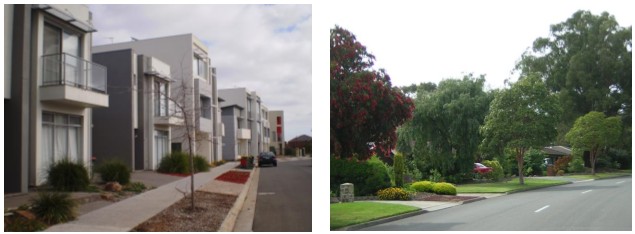Last week I lambasted The Greens for maintaining tacit support for high immigration while lobbying strongly against urban sprawl in favour of in-fill development, which I argued was totally inconsistent with their policy goal of affordable housing.
This quote from The Greens’ co-deputy leader, Scott Ludlam, encapsulates the party’s position:
The Australian Greens have called for better planning and transport infrastructure to help avoid urban sprawl as the nation’s population grows.
Greens public transport, housing and sustainable cities spokesperson, Senator for Western Australia Scott Ludlam, said authorities need to work together to plan sustainable cities.“The National Institute of Labour Studies reported that Sydney and Melbourne will need more than 430,000ha of new land by 2050 on current migration levels – but this is also based on current building and planning practices,” said Senator Ludlam. “We need to develop more medium and high density energy-efficient housing in our cities, with improved public transport to reduce congestion and the need for parking space.”
“Better urban planning will reduce urban sprawl, protect valuable agricultural land, take the upwards pressure off housing prices and reduce the reliance on cars for transport.”
Now, parents have raised concern that in-fill development and rising class sizes in Perth’s inner suburbs is eating-up precious green space. From The ABC:
Earlier this year parents at Bassendean Primary School in Perth’s east held a sit-in in a last-ditch attempt to stop part of the school oval being turned into a car park.
The two high schools in the western suburbs, Shenton College and Churchlands, are bursting at the seams and playing fields are now used to accommodate students in demountable classrooms.
The latest school to come under pressure is Inglewood Primary School, where the Education Department has announced plans to use a portion of the school oval for a two-storey building.
Parents have expressed concern about the loss of green space at the school and said they had not been consulted on the proposal…
John Fischer, executive director of infrastructure at the Education Department, said urban infill in the inner-city suburbs had placed space pressure on many schools.
Who would have thought: jamming thousands more people into a given area would chew-up green space? It’s hardly rocket science, and yet it’s the same story in other Australian cities, where rising population numbers are choking inner city schools and destroying green space.
Of course, there’s another unintended consequence from The Greens’ infill utopia: the ‘heat island’ effect and rising energy use.
Back in February 2014, a group of Melbourne and Monash University academics produced research arguing that the loss of vegetation from urban consolidation is causing heat-island effects, in turn raising temperatures and energy use:
Ever-growing houses, on ever-shrinking plots, mean that the average backyard has shrunk. Population growth has driven up property prices so that residential blocks are being subdivided for units or townhouses.
Meanwhile, larger green open spaces are being sold and developed…
Then in January last year, Helen Brown – Lecturer in Health, Safety and Environment at Curtin University – published an article in The Conversation arguing that the lack of trees in new housing developments is significantly increasing the use of air conditioners and energy use:
The population of major Australian cities is expected to double in the next four to five decades. Planned increases in urban density are likely to result in the removal of a significant number of trees from urban areas.
Fewer trees in cities help create urban heat island effects – that’s when buildings and footpaths absorb the sun’s heat and then radiate it back out. Increases of up to three degrees are common and, in extreme cases, night-time increases of up to 12 degrees have been recorded.
And in March this year, Griffith University academics, Tony Matthews and Jason Byrne, posted an article in The Conversation urging Australia’s planners to develop urban greening strategies to overcome the “heat island effect” and cool Australia’s cities.
The fact of the matter is that The Greens’ position of tacitly supporting never-ending immigration and population growth, as well as increased urban density, is seeing backyards and green space disappear in order to accommodate new housing and infrastructure.
It is worth noting that housing developments built in the 1950s, 1960s, 1970s, 1980s and 1990s (represented below on the right) typically have large blocks, ample green space, and lots of tree cover. In short, they are a desirable places to live and do not suffer from the “heat island effect”. Now compare these 20 to 60 year-old developments with the cluttered rubbish produced today (represented below on the left), which are proliferating:

Clearly, maintaining green infrastructure in our major cities is not consistent with the projected explosion of their respective populations along with planning rules that force increased population density.
Herein lies yet another contradiction at the heart of The Australian Greens. The only way that The Greens can credibly argue against urban sprawl and environmental amenity is if they also strongly oppose mass immigration. Yet they remain conspicuously silent on the latter.

